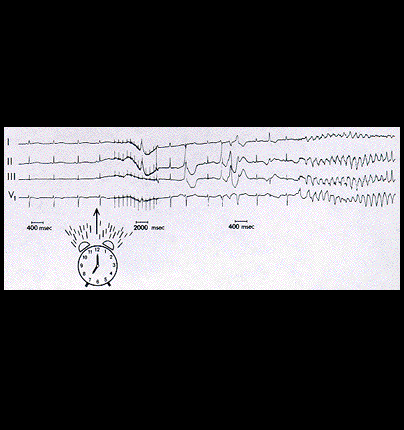
As mentioned several times earlier in this section, congenital prolongation of the QT interval predisposes the patient to the development of torsade de pointes ventricular tachycardia and ventricular fibrillation. This is frequently precipitated by stress, fear, or exercise. In 1972, Wellens and co-workers described a 14 year old girl with congenital prolongation of the QT interval who developed ventricular fibrillation when she was suddenly startled and awakened by the ringing of an alarm clock. This figure is taken from that report (Circulation 46:661.1972).
